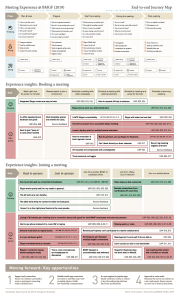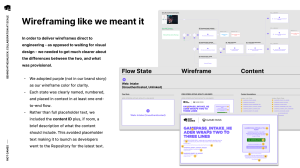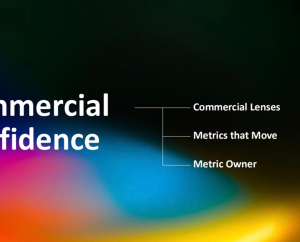Cheryl Platz, Author of Design Beyond Devices and The Game Development Strategy Guide
Living in unprecedented times is wearying on all humans, but designers experience an exquisite sort of suffering because we feel like you should be able to do more. Opti-pessimism, or opti-pessimistic thinking, has been at the core of the hardest work that I do for a decade now: this form of catastrophic creativity is a critical coping strategy for me as a design leader. In this article, we’ll explore how the opti-pessimism and design framework has helped me bring positive impact to hundreds of millions of people around the world, directly or indirectly, using 2 key examples:
- Preparing the Gates Foundation for Remote Work
- Delivering the Riot Games + Xbox Game Pass partnership on time
Defining Opti-Pessimism
Opti-pessimism is a mental framework that helps designers, technologists, and futurists push their designs past the ordinary and into the territory of the extraordinary, both good and bad. In short, opti-pessimistic thinking helps you take a half-full glass and prepare for the possibility that it may be half empty because it’s leaking while simultaneously half full because it’s on its way to overflowing. I first introduced opti-pessimism at several talks and keynotes around the world before including it in my first book, Design Beyond Devices: Creating Multimodal, Cross-Device Experiences in 2020. Opti-pessimistic thinking is rooted in two theoretical questions:
- What are the worst consequences if your product or project is successful?
- What are the best ways that you can respond to an unforeseen major problem?
The larger framework provides specific challenge prompts and questions for each of the prompts, as seen in this figure from my book.

Preparing the Gates Foundation for Remote Work
When I began work at the Gates Foundation in late 2018, it never even occurred to me that I was joining one of the world’s biggest global health organizations as the world headed for its largest and most disruptive global pandemic. All I knew was that the mission resonated with me, and the opportunity to serve as Principal UX Designer in charge of Productivity and Collaboration was a dream role.
I was hired to evaluate the use of technology at the foundation and make recommendations on future investments of greatest value. But while my sponsors expected me to come back with something like “fix Sharepoint,” my user experience research returned an unexpected but clear and strong signal: our on-premise implementation of Skype for Business was a huge detriment to the ongoing success of the foundation, draining in some cases 30 minutes or more of productivity per person per day. The good news was that Microsoft’s Teams would be a clear solution to our problems. The bad news was that the rollout wasn’t scheduled to begin for 2 years, and it would require a hardware investment of $2 million to retrofit all foundation conference rooms before we could make the switch.
Applying opti-pessimistic thinking: What if foundation employees or partners found themselves in a bad situation where they needed to work remotely at low bandwidth? Our Skype solution would not scale. We needed a better response plan in place, sooner rather than later. This wasn’t as unlikely as it sounds, as the nature of the foundation’s work puts employees in far-flung environments and requires collaboration with governments around the world.
Long story short, I pivoted my research plan to build a strong case about the harms caused by the Skype for Business installation, and together with my Director partner successfully pitched the executive leadership team on an immediate commencement of the $2 million physical overhaul of all global conference rooms. Based on that investment, the timeline for Teams replacement went from 2021–2022 to 2019–2020.
There is a lot more to this fascinating project, and I’m very proud of the work, for which I received a merit award for impact to the Foundation during 2020-humbling in the context of what was going on. I could not have accomplished this feat without opti-pessimistic thinking. I did not know a pandemic was coming. I did not know my research would enable us to make Teams the global standard two weeks before the foundation closed for the pandemic, nor that my approach to proactive hands-on Teams education meant that most critical employees like program assistants would have the knowledge they needed to work from home immediately during our most critical week of the year. But I DID know that it was a good idea to ensure we were well-positioned to respond to unforeseen problems quickly and confidently, and since meetings are the heart of that business, so too was this work. I didn’t need to be psychic to help ensure life-saving work continued in critical conditions. I just needed to be opti-pessimistic.
To learn more about the Teams Enablement Project, visit my portfolio.

Delivering the Riot Games + Xbox Game Pass partnership on time
I’ve written several Medium posts about my work on the Riot Games partnership with Xbox Game Pass, which is another one of my prouder career moments. While there are a number of key learnings from that project, let’s focus on a process insight.
As someone who had shipped multiple console games before as a producer at Electronic Arts and as a Disney 3rd party developer, I had deep experience with how difficult brand compliance could be. I’d seen entire game release candidates failed at the last minute for text-based errors like the capitalization of “b” in “Button”. And as a former Microsoft employee, I knew that Microsoft had very complex and exacting brand standards. Thus, from the start, I knew that a worst-case scenario for us was last minute brand or legal compliance issues that could crop up and delay shipping or cause painful crunch spikes to keep us on track. As a design leader, I also knew my team wasn’t used to delivering text and art to those exacting standards. How might we prevent the worst from occurring?
Where I landed was driving my team to new standards of text and wireframe delivery. For some folks who work at AAA studios, this may seem obvious, but to most folks it’s a stretch.
- I encouraged my UX designers to lead with rigid naming of every screen and every localization ID.
- I created an Airtable that centrally tracked every localization ID for the project, since we had no standard for this kind of cross-platform engagement.
- We set the standard that every use of a localization ID was labeled in wireframes, which meant that developers could easily see where and how to reuse strings – critical in minimizing needless duplication of content.
- I partnered with my lead designers to set the standard that our wireframes WOULD NOT contain full placeholder text that might slip all the way to implementation. Instead, we would use only raw placeholders that described what was desired, or the localization ID itself. This made it clear to developers that they needed to go to the Airtable for final strings.
- I asked our writers to work in the Airtable and not in Figma.

While the addition of the Airtable and the localization IDs did add friction to our process, it paid off. Our developers reused key strings, like legal disclaimers, instead of cloning them. This reduced our compliance risk as well as our writing overhead.
And sure enough, Murphy’s Law reared its head. While I can’t get into details, just a few weeks before launch a massive change to the terms of our partnership came through that necessitated changes to all three of our core legal strings. I had advocated for being very transparent about our data sharing, so these were prominent on many screens, and it could have slipped our ship date if we had to translate 20 copies of these. But because of our rigor, we had only 3 strings to change and we knew exactly where to go to validate those changes. We were able to clearly plan, translate, implement, and validate the changes with no change to our holiday ship timeline. Was it stressful? 100%. But it wouldn’t even have been mathematically possible without opti-pessimistic planning.
For more about this project, check out my Riot Games UX Blog posts on the subject: Part 1 and Part 2.
Applying Opti-Pessimism to your work
I don’t frequently apply this framework formally, like stopping a meeting and telling everyone “Let’s be opti-pessimistic now!” Rather, these questions feed organically into many typical design conversations, and I make them a part of my day to day work. Start with these four guiding principles of opti-pessimistic design:
- Consider (and lead with) the human context.
- Design for the best case: big success.
- Plan for the worst case: abuse, failure, and bad actors.
- Be ready to adapt to the unexpected in the moment.
These four principles, and the challenge questions I’ve provided in other forums, if you want to go deeper, help you ensure you’re looking at problems not just holistically but critically with a long-term lens. I’d love to hear how opti-pessimism is showing up in your design practice: find me on BlueSky at @funnygodmother to start the conversation.
I hope to see some of you in Tokyo this fall at Design Matters Tokyo for my talk, which will build on some of this work, “Future sight in design: Using process and context to solve the right problems.”
AUTHOR BIO: Cheryl Platz is an internationally renowned user experience designer, creative director of video games, adjunct faculty at Carnegie Mellon University, owner of design education company Ideaplatz LLC, variety streamer on Twitch as FunnyGodmother, and author of Design Beyond Devices: Creating Multimodal, Cross-Device Experiences (Rosenfeld Media, 2020) and The Game Development Strategy Guide (Rosenfeld Media, coming out September 16th, 2025). Follow her on LinkedIn to be the first to know about her upcoming book release and its associated podcast, Enduring Play.










